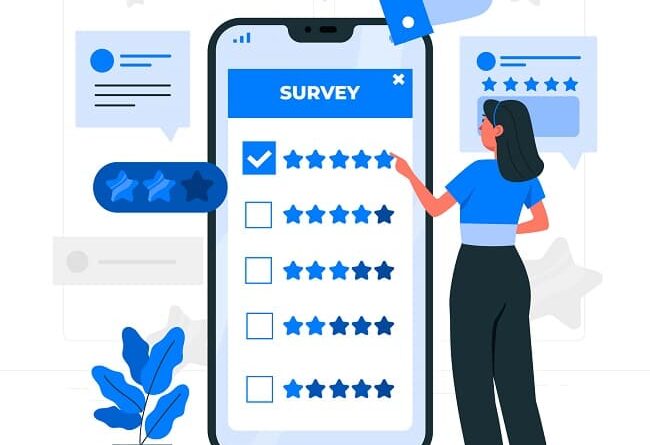Understanding Surveys: An In-depth Analysis
Have you ever wondered about the magic underlying those surveys that pop up on your screen or make their way to your inbox? Well, that’s precisely what we’ll dissect in this article – the world of surveys. Used across a plethora of fields, these unassuming tools are conduits for acquiring some of the most valuable information available. Whether it’s market research, employee feedback, customer satisfaction, or public opinion, the humble survey lays the groundwork for insights that drive decision-making.
We will unbox the complexities of creating effective surveys, discuss its diverse uses, and nestle into methodologies that can aid you in achieving the best results. Not just that, we would like to walk you through the steps you need to take in designing a robust survey, and, interestingly, help you explore and understand what the survey results are whispering. Buckle up, because by the end of this journey, we promise you some pivotal takeaways that can revolutionize the way you look at surveys.
The Basics of Surveys
In this initial portion of our discussion, we delve into the world of surveys, those invaluable tools for gaining insights. Surveys have carved a pivotal role in research as well as business by serving as a bridge between the questioner and the target audience. Wondering why? Well, they enable researchers and companies to tap into the minds of individuals and groups to ascertain their likes, dislikes, opinions, preferences and feedback. Such information holds immense power in shaping policies, enhancing products and services, and even driving societal changes!
Now, not all surveys are akin. We encounter various types of surveys in our day-to-day lives, each serving a unique purpose. They come in different shapes and sizes from customer satisfaction surveys to brand awareness surveys, employee engagement surveys, market research surveys, demographic surveys, product feedback surveys, among others. Indeed, the types of surveys are as diverse as the range of human curiosity and need for information.
Digging deeper, a survey is more than a series of questions. It’s an intricate system comprising key elements like questions, respondents, and responses. Questions form the backbone of the survey, guiding respondents towards the information we seek. Respondents, on the other hand, are the individuals who take the survey and share their thoughts. And responses? They are the pearls of wisdom that we gather from our surveys.
Survey Designing Process
In this section of the blog, we embark on a deep dive into the intricate process of designing surveys. It’s quite an adventure, beginning with the simple yet significant task of defining the survey’s objectives. Like a compass showing direction, these aims steer the survey development process in the right direction. So, you ask, ‘how do you go about it?’ Honestly, there’s no one-size-fits-all answer.
Next, the spotlight turns to question formulation. Crafting the perfect question is both art and science; effective communication depends on it. You need to pose questions that are precise, sensitive to the respondent’s perspective, and invaluable to the data you aim to collect.
The mysteries of scaling and sequencing reveal themselves next. Don’t you just hate when a survey leaves no room for nuances in your response? Yeah, we do too! That’s why scaling is crucial. It allows respondents to express their perspectives in degrees, providing information that’s more nuanced and ultimately more valuable. Sequencing, on the other hand, is all about presenting questions in an order that makes sense and doesn’t impact the responses.
A good survey is like a house – built on a solid foundation and validated to withstand the storm of scrutiny. We’ll discuss some principles of validation, ensuring the survey measures what it intends to. And last but certainly not least, we’ll talk about respondent engagement. Keeping respondents engaged is a task at which even the most compelling surveys can fail.
Survey Methods
In this part of the blog, we take a deeper dive into understanding the different types of survey methods—the online, telephonic, face-to-face, and mailed surveys. Each of these methods has its unique advantages and disadvantages, and choosing the right one for your research needs calls for a thorough understanding of these nuances.
We start by discussing the online survey method, which, thanks to the digital age we live in, is increasingly becoming the go-to method for many. Its cost and time efficiency coupled with wider reach make it a popular choice. However, it’s not without its drawbacks. For example, non-response error and sampling bias can be significant issues with this method.
Next, we discuss telephonic surveys, known for their higher response rates and the ability to gain immediate responses. Yet, they may not be ideal if your survey contains visual elements or complex questions— factors you must consider. Face-to-face surveys, while they can provide rich data and have high response rates, are time-consuming and can involve high costs. Lastly, although mailed surveys can reach respondents who lack internet or telephone access, they have low response rates and can also take longer to complete.
Remember, the trick to a successful survey lies not only in designing impactful questions but also in choosing the right mode of survey for your target audience. Take time out to weigh the pros and cons explained above before you decide. Happy surveying!
Unpacking Survey Results
One of the integral aspects we explore is interpreting the complex data that surveys yield. This is far from a straightforward process as it involves a deep dive into a sea of data points, each bearing insights that need to be carefully brought to the surface. Using reliable statistical tools and savvy analysis methods, we unpack the numbers and percentages, aiming to make sense of the respondents’ feedback.
Once these data points have been unraveled, translating them into meaningful findings becomes our next step. This is where our capability to connect the dots comes into play. It involves taking the key insights gleaned and weaving a comprehensive narrative that paints a clear picture of the survey’s outcomes.
We are also keen on demonstrating effective ways to present these findings. The goal is not just to understand the data, but also to articulate it in a manner that the audience can easily grasp. Whether it’s through illustrative charts or eloquent reports, we impart techniques that maximize the impact of your survey data.
In a world that’s increasingly data-driven, effectively analyzing and communicating survey results can provide a significant edge. With our guidance, you won’t just be reeling in data, but you’ll also be transforming it into valuable insights that can fuel decisions. After all, a survey is only as good as the results it can communicate.
Conclusion – The Art and Science of Surveys
In wrapping up, embarking on a journey through the rudiments and complexities of surveys unearths the sheer weight they carry in forming corporate decisions. We’ve delved into the nitty-gritty, shedding light on the skills and understanding necessary to craft meaningful surveys, ultimately equipping beginners with insights that translate into seasoned know-how.
Understanding the landscape of surveys is akin to owning an oracle that can guide your decision-making process with precise data. From this article, we hope you’ve grasped that survey creation isn’t a cumbersome task reserved for the few. Instead, it’s an expertise that anyone can master, and when utilized aptly, can prove to be a gamechanger in any decision-making scenario. Let’s champion the use of data-driven decisions, billing surveys as our powerful tool!
More about Marketing :
Cracking the Code of B2B Marketing: Strategies to Elevate Your Business, click here
Market Dominance: Strategic Sales Approaches, click here
Prioritizing Ethical Practices in Sales: Establishing Appropriate Boundaries, click here
Transition to Digital: Transforming Classic Sales Strategies for the E-commerce Age, click here
The Ultimate Guide to Winning Website Marketing Strategies, click here


